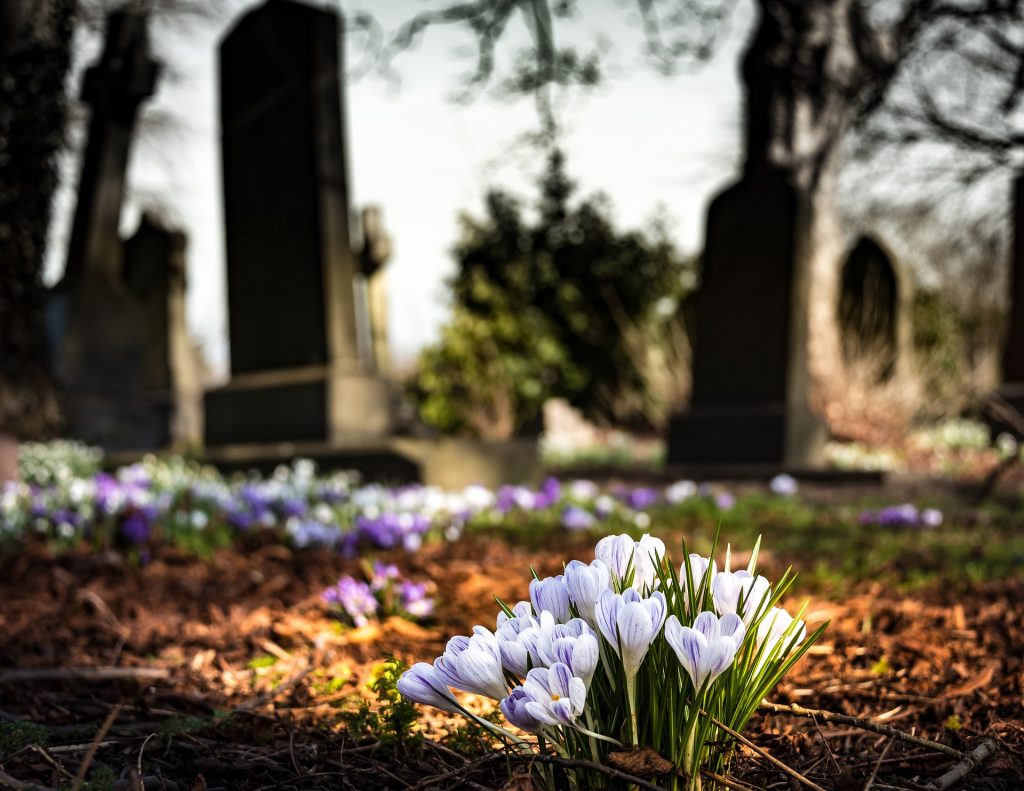
In January, I told you about the “eco etiquette” and my attempt to reduce my own ecological footprint. In the meantime I have changed a number of processes and products in my everyday life and I am still in the process of finding out how big its effect might be. It is a complex undertaking… For some issues it is made easy for me: there is a credible book, an expert or a reputable website that can help. In other areas it is more complicated.
An example of this is the matter of how you would like to organize your parting from the Earth. Is there an “green” burial? You start at the end, so to speak, but everyone has to consider it eventually, so why not now? In addition to the relevant literature, I discovered a fascinating source of information on this subject: the local crematorium organised an open day.
The Dutch love open days – not only, but also because of the free coffee that is obligatory on these occasions. Not only the crematorium issues an invitation every few years, but also the local branch of a well-known funeral home “chain” welcomed interested guests on the occasion of the successful completion of the branch conversion! Right, let’s get our skates on!
Along with free coffee the undertaker offered free chocolate ice cream, the local brass band played Leonard Cohen’s “Hallelujah” (with the discreet hint that it can also be booked for funerals…) and there were information desks with which the funeral home could show that it is also open for all kinds of esoteric things. I learned that – depending on one’s spiritual inclination – one can wear the ashes (or at least a part of them) in a golden pendant on a necklace or bracelet or add paint to them to create a portrait of the deceased. They can also be shot into the air with a small rocket. At least in this country, it seems that a lot is possible…
All in all, it was a successful event – but the boss of the house got a little nervous when some visitors purposefully headed for the steel door to the cold store. The real fan of the “open door” is consistent and leaves no door overlooked!
In the crematorium things got more tangible – there was a guided tour through the whole premises, the technical finesses of the oven were explained, and one could study the catering possibilities for the reception rooms where farewell drinks can be consumed after the funeral service. Furthermore, the visitors could walk through the park and choose a place for their own urn.
During the guided tour I learned, among other things, that above certain temperatures matches are no longer necessary to turn something into ashes, and that in the Netherlands, after cremation, precious metal residues are “recycled” and the proceeds are donated to the J. C. Vaillant Foundation, which uses them to support projects in the health sector. Mr Vaillant was the first Dutchman to be cremated in his own country in 1914. Until then because the legislation in the Netherlands was not yet unambiguous, Dutch citizens were cremated in Germany.
Equipped with this and many other useful bits of information, as well as with brochures and interesting web addresses, I continued my research. It’s a terrible waste of good German oak for coffins – are there any other possibilities? There are these days. There are coffins made of cardboard, wicker, bamboo and banana leaves. I’ll have a closer look at the offer with the banana leaves – with a Fair Trade seal! That’s sounds promising, but do the leaves on the bananas come to Europe anyway, or are the complete coffins transported halfway around the world? One supplier writes that the coffins are manufactured in Indonesia. That does not sound very sustainable to me – fair trade or no fair trade. But I’ll have to delve into this more closely…
According to the sustainability platform Utopia.de, researchers at a Czech university have analysed different types of burials in terms of their environmental impact and concluded that burials in the ground tend to be “more environmentally friendly” than cremations. Would the result change in favour of cremations if they used “green electricity”?
Sea burials also did well from an ecological point of view, an urn made of papier-mâché or salt is apparently not a burden to the sea – at least as long as the 20 closest relatives do not book a cruise to commit the urn to the sea. But a burial at sea is also not an option for everyone. In Germany, also according to Utopia, you have to prove “a deep attachment of the deceased to the sea” in order to get it approved. Again, I haven’t gone into the details yet, but I don’t think that a class A sailing licence will be quite sufficient…
Conclusion: Although for every question answered in detail I have five new ones needing answers, I still have the feeling that I am smarter than at the beginning of my “project”. And – even more important – it’s good to deal with this special topic already, as long as you can laugh about some phenomena. As they say in the Ruhr area: When things get serious, the fun is over.
Original text: BBR
English translation: BCO
Bildquellen
- graveyard-1417871_1920 (1): drippycat / Pixabay

